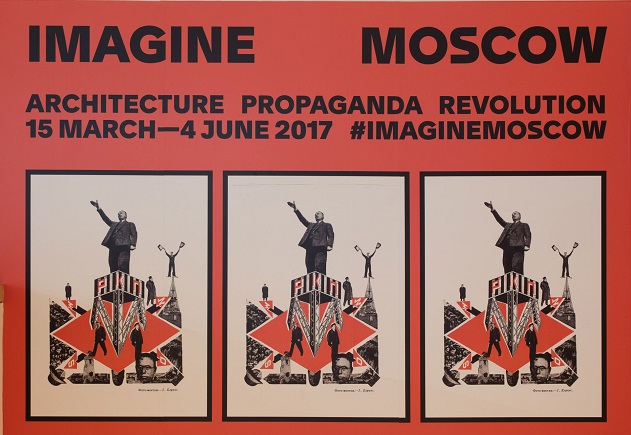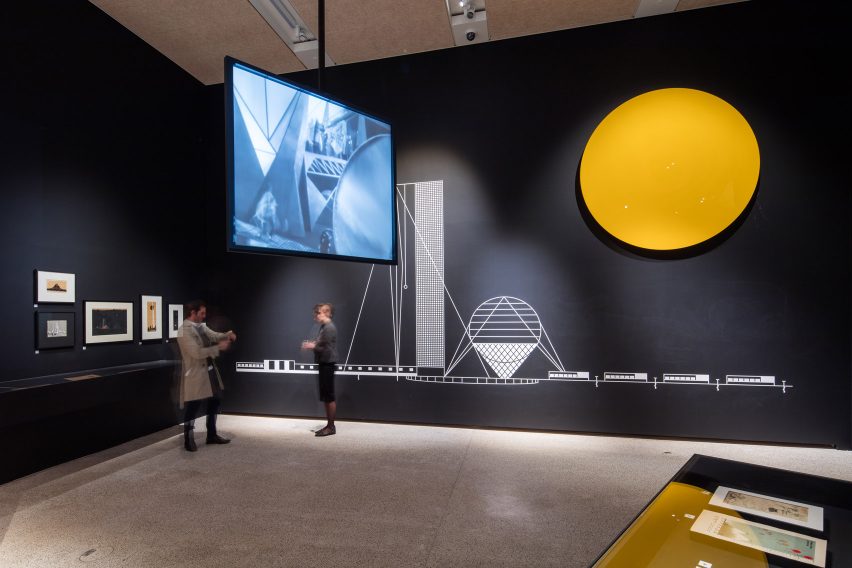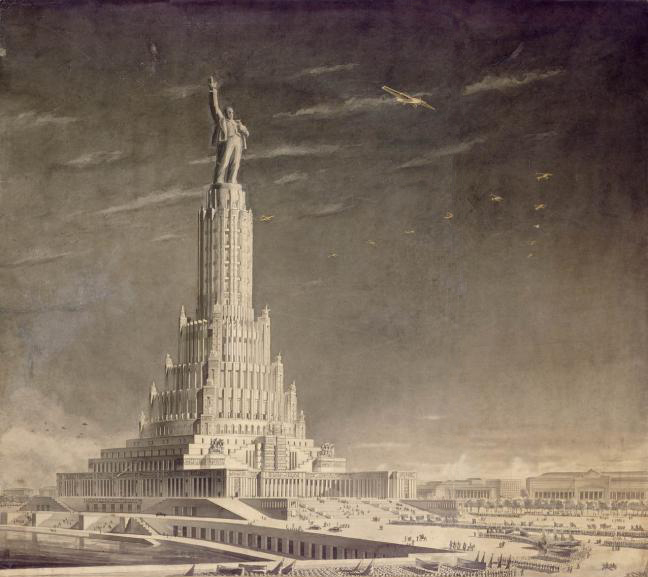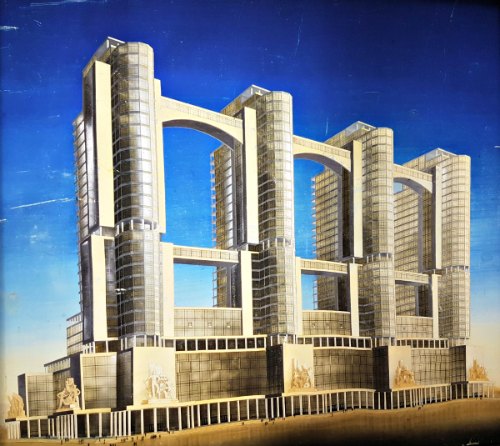Main author
Michael BrooksImagine Moscow exhibition
In March 2017, Designing Buildings Wiki went to the London Design Museum to see the Imagine Moscow exhibition, marking the centenary of the Russian Revolution.
The exhibition presents six different ‘visions of Moscow’ imagined by architects and designers from 1917 until the early-1930s, a heady and exciting post-revolutionary era as the possibilities of the new ‘scientific society’ became clear. The vaulting ambition of this new generation is easily grasped in the rarely-seen material gathered for the displays.
Whether it’s the Supremacist artworks exploring new dimensions and patterns, or pro-literature propaganda posters as part of the new educatory push, there is the inescapable impression of a society’s utopian muscles being flexed, but that would atrophy in just a few years with the technocratic bureaucracy of Stalin.
The exhibition focuses on six key projects that exemplify the heights of ambition:
- Communal House: A scheme to introduce communal housing that would eliminate the nuclear family.
- Cloud Iron: A network of horizontal skyscrapers containing offices and apartments.
- Lenin Institute: An enormous library that would serve as the ‘accumulated knowledge’ of the human race.
- Health Factory: A Black Sea retreat that would provide respite and leisure for urban workers.
- Commissariat of Heavy Industry: A building that would celebrate the importance of industry to socialism.
- Palace of the Soviets: A grand monument to Lenin, and the tallest building in the world.
The exhibition succeeds in capturing the sense of exhilaration and dynamism inherent in these projects, with large-scale illustrations and, in the case of the Palace of the Soviets, a giant replica of the forefinger for the 100 m-high statue of Lenin that would stand tall over Moscow.
This, and the fascinating section on the design competition for Lenin’s Red Square mausoleum, reveal the idolatry and hero-worship as, despite the Soviet Union’s technological and modernist aspirations, just another form of religion.
The exhibition serves as a welcome reminder of a time when architects, designers and engineers genuinely believed they could remake society and, as a result, human beings themselves.
Even though the USSR and its methods have long since been discredited – the section on the rigid planning of daily routine amply demonstrates the totalitarian nightmare that was being created – it should still perhaps be considered that for architecture to have any kind of positive influence on society it needs something of the same towering ambition and imagination.
Imagine Moscow runs until the 4th June 2017.
For more information, see Design Museum.
[edit] Related articles on Designing Buildings Wiki
- Bridge Engineering exhibition
- Buildings that were never realised.
- Constructivist architecture.
- Engineering the World - VandA Museum
- London Design Museum.
- Nowa Huta - Communist tour review.
- Owen Hatherley - Landscapes of Communism.
- Socialist realism in a post-war Czechoslovak new town.
- Spomeniks.
- St. Basil’s Cathedral.
- The Japanese House: Architecture and Life after 1945.
- The Kremlin.
Featured articles and news
From studies, to books to a new project, with founder Emma Walshaw.
Types of drawings for building design
Still one of the most popular articles the A-Z of drawings.
Who, or What Does the Building Safety Act Apply To?
From compliance to competence in brief.
The remarkable story of a Highland architect.
Commissioning Responsibilities Framework BG 88/2025
BSRIA guidance on establishing clear roles and responsibilities for commissioning tasks.
An architectural movement to love or hate.
Don’t take British stone for granted
It won’t survive on supplying the heritage sector alone.
The Constructing Excellence Value Toolkit
Driving value-based decision making in construction.
Meet CIOB event in Northern Ireland
Inspiring the next generation of construction talent.
Reasons for using MVHR systems
6 reasons for a whole-house approach to ventilation.
Supplementary Planning Documents, a reminder
As used by the City of London to introduce a Retrofit first policy.
The what, how, why and when of deposit return schemes
Circular economy steps for plastic bottles and cans in England and Northern Ireland draws.
Join forces and share Building Safety knowledge in 2025
Why and how to contribute to the Building Safety Wiki.
Reporting on Payment Practices and Performance Regs
Approved amendment coming into effect 1 March 2025.
A new CIOB TIS on discharging CDM 2015 duties
Practical steps that can be undertaken in the Management of Contractors to discharge the relevant CDM 2015 duties.
Planning for homes by transport hubs
Next steps for infrastructure following the updated NPPF.



























